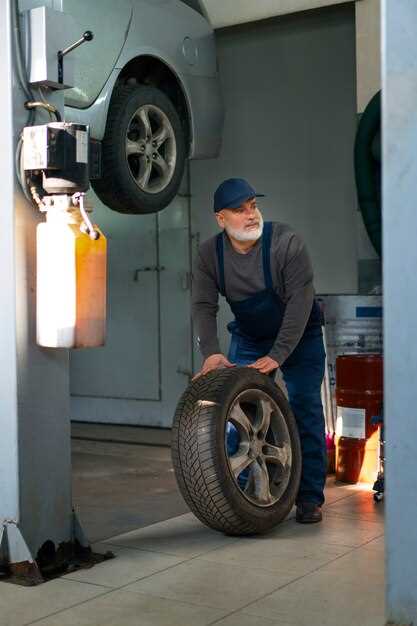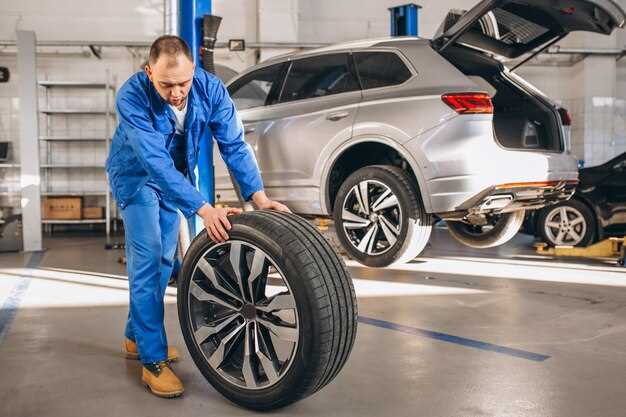
Upgrading your vehicle often involves a variety of enhancements to improve performance, aesthetics, and overall driving experience. Among the most impactful modifications you can make are the installation of aftermarket wheels. Not only do these wheels elevate the visual appeal of your car, but they also play a crucial role in enhancing handling, traction, and braking performance.
When selecting the right wheels for your vehicle, it’s essential to consider factors such as size, material, and design. Aftermarket wheels come in various styles and finishes, allowing you to personalize your ride to reflect your taste. Materials like aluminum and magnesium offer a unique balance between weight and strength, contributing to improved acceleration and fuel efficiency.
In this article, we will explore the top aftermarket wheels available on the market today, highlighting their features, benefits, and compatibility with different vehicle models. Whether you’re seeking lightweight options for better performance or robust designs for off-road adventures, our comprehensive guide will assist you in making an informed decision to enhance your vehicle’s capabilities and aesthetics.
Understanding Wheel Fitment: What You Need to Know

Wheel fitment is crucial when upgrading your vehicle’s wheels, as it affects performance, handling, and aesthetics. Proper fitment ensures that wheels not only fit your vehicle physically but also align with its performance requirements.
Key measurements to consider for wheel fitment include:
| Measurement | Description | Importance |
|---|---|---|
| Diameter | The size of the wheel measured in inches from one edge to the other. | Affects acceleration, braking, and overall handling. |
| Width | The distance between the inner and outer edges of the wheel. | Influences tire selection and contact patch with the road. |
| Offset | The distance from the wheel’s hub mounting surface to its centerline. | Affects how the wheel sits in relation to the fenders and suspension components. |
| Bolt Pattern | The arrangement of bolts on the wheel hub. | Must match the vehicle’s hub to ensure proper attachment. |
| Hub Centric | The inner diameter of the wheel that fits over the vehicle’s hub. | Ensures that the wheel is centered for balanced performance. |
When selecting aftermarket wheels, it is essential to ensure compatibility with your vehicle’s specifications. Mismatched fitment can lead to issues such as increased tire wear, poor handling, and even potential damage to the vehicle’s suspension system.
Consulting your vehicle’s manual or a professional can help clarify the correct specifications required for the wheels. Proper research and understanding of wheel fitment will help you make an informed decision that enhances your vehicle’s performance and appearance.
Materials and Construction: Which Wheels are Right for Your Needs?
When choosing aftermarket wheels, understanding the materials and construction methods is crucial for optimal performance and aesthetic appeal. The two primary materials used in wheel production are aluminum and steel, each offering distinct advantages.
Aluminum Wheels are popular for their lightweight properties and aesthetic versatility. They provide better performance, enhancing fuel efficiency and handling due to reduced unsprung weight. Aluminum wheels often undergo a manufacturing process called forging or casting. Forged wheels are hammered into shape, resulting in increased strength and durability, while cast wheels are poured into molds, making them generally more affordable but potentially less robust.
Steel Wheels, on the other hand, are typically heavier and more durable, making them suitable for off-road use and harsher conditions. They are usually made from a single piece of steel, which contributes to their strength but may compromise performance due to added weight. Steel wheels are an excellent choice for winter driving, as they can withstand harsh conditions and are resistant to corrosion from road salts.
Additionally, consider wheel construction techniques such as welded versus monoblock. Welded wheels, made from multiple pieces, are often less expensive and can be repaired more easily. In contrast, monoblock wheels, crafted from a single piece of material, tend to offer superior strength and are often favored in high-performance applications.
Ultimately, the right choice depends on your specific needs and driving style. If performance and aesthetics are your priorities, aluminum forged wheels may be the best option. For budget-conscious buyers needing durability for everyday use, steel wheels could be the way to go. Assess your requirements carefully to ensure a satisfying upgrade to your vehicle.
Wheel Size and Offset: Choosing the Perfect Dimensions
Choosing the right wheel size and offset is crucial for enhancing your vehicle’s performance and aesthetics. The wheel diameter and width significantly affect handling, ride comfort, and overall appearance. A common size range for aftermarket wheels is between 15 to 22 inches in diameter, which offers various options depending on your vehicle type and intended use.
Wheel Diameter refers to the distance across the wheel from one edge to the opposite edge. Larger wheels can improve cornering capability and provide a more aggressive look, but they may also lead to a stiffer ride and increased road noise. Conversely, smaller wheels typically enhance ride comfort but may reduce handling precision.
Wheel Width is another vital dimension that impacts tire selection and vehicle dynamics. Wider wheels allow for wider tires, increasing grip and stability during sharp turns. However, going too wide can lead to rubbing against the wheel wells or suspension components, so it’s essential to consult your vehicle’s specifications before upgrading.
Offset is the distance from the wheel’s mounting surface to its centerline, affecting how the wheel sits relative to the fender and suspension components. A positive offset positions the wheel further inward towards the suspension, while a negative offset extends it outward, enhancing the aggressive stance. Careful consideration of offset is necessary to avoid issues like tire rubbing or affecting the steering geometry.
When selecting your aftermarket wheels, it’s vital to consider the balance between aesthetic appeal and functional performance. Always adhere to the manufacturer’s specifications or consult a professional to ensure compatibility with your vehicle’s existing components. Ultimately, the right size and offset can dramatically transform your ride, enhancing both its look and handling characteristics.
Brand Comparison: Top Manufacturers to Consider
When upgrading your vehicle with aftermarket wheels, selecting the right manufacturer is crucial. Each brand offers unique advantages in terms of design, performance, and durability. Below are some of the top manufacturers that are widely recognized for their quality and engineering.
-
O.Z. Racing
Founded in Italy, O.Z. Racing is known for its high-performance wheels that combine advanced technology with aesthetic appeal. They are often used in motorsports and are praised for their lightweight construction and strength.
-
BBS
BBS is a German manufacturer celebrated for its premium alloy wheels. Their products are known for exceptional craftsmanship and innovative designs that provide both style and performance enhancements.
-
HRE Wheels
HRE is synonymous with luxury and performance. These custom-built wheels are designed for high-end sports cars and are engineered to withstand extreme conditions while providing a striking appearance.
-
Fifteen52
Fifteen52 specializes in retro and motorsport-inspired wheel designs. Their wheels are lightweight and made to meet the needs of both everyday drivers and racing enthusiasts, providing a unique aesthetic.
-
Enkei Wheels
Enkei is a well-respected Japanese brand known for producing affordable yet high-quality wheels. Their wheels are lightweight and designed with various styles suitable for different types of vehicles.
-
Forgeline
Forgeline provides bespoke forged aluminum wheels that cater to performance vehicle owners. Each wheel is made to order, allowing for customization in size, design, and finish.
When choosing between different manufacturers, consider aspects like the type of driving you do, compatibility with your vehicle, aesthetic preferences, and budget. Each brand exemplifies commitment to quality and innovation, ensuring that you can find the perfect aftermarket wheels for your upgrade.
Price Ranges: How Much Should You Expect to Spend?
When considering aftermarket wheels, understanding the price ranges is crucial for making an informed decision. The cost of wheels can vary significantly based on materials, brand, size, and design.
At the lower end of the spectrum, budget-friendly aluminum alloy wheels typically range from $50 to $150 per wheel. These wheels are often mass-produced and ideal for daily drivers looking to enhance aesthetics without breaking the bank.
Mid-range options, which offer a balance of quality and affordability, usually fall between $150 and $400 per wheel. This category often includes well-known brands and performance-oriented designs that enhance both look and performance. Wheels in this range are typically lighter and more durable than their budget counterparts.
For enthusiasts and those seeking premium performance, high-end wheels start at around $400 and can exceed $1,500 per wheel. This price range often includes forged wheels, which are crafted for maximum strength and minimum weight, as well as custom designs tailored to specific vehicle types. These wheels not only improve the car’s performance but also elevate its overall aesthetic appeal.
Additionally, it’s essential to factor in the costs of installation, which can add another $100 to $200 depending on local labor rates. Special considerations, such as the need for wheel spacers or different lug nuts, can also affect the total expenditure.
Ultimately, the amount you should expect to spend on aftermarket wheels depends on your vehicle’s requirements, your performance goals, and your personal budget. It’s always advisable to research thoroughly and consult with automotive professionals to ensure you make the best choice for your upgrade.
Installation and Maintenance: Keeping Your Aftermarket Wheels in Top Shape
Proper installation of aftermarket wheels is crucial for achieving optimal performance and ensuring safety. Start by ensuring that the wheels are compatible with your vehicle’s specifications, including bolt pattern, offset, and center bore. It’s recommended to use a torque wrench to secure the lug nuts to the manufacturer’s recommended specifications, which helps prevent damage to the wheels and the vehicle. Ensure that the wheels are balanced correctly to avoid vibrations that could affect handling and tire wear.
Maintenance is essential for prolonging the life and performance of aftermarket wheels. Regularly inspect the wheels for signs of damage, such as bends, cracks, or corrosion, which can compromise their integrity. Clean the wheels frequently to prevent brake dust and road grime from building up. Use a gentle wheel cleaner and a soft brush to remove dirt without scratching the surface.
Check the air pressure of your tires often, as incorrect pressure can lead to uneven wear and diminished performance. It’s also vital to rotate your tires according to your vehicle manufacturer’s guidelines. This practice helps evenly distribute wear across all tires, extending their lifespan and maintaining the performance of your wheels.
Lastly, consider periodic professional inspections, especially if you drive in harsh conditions or off-road. A professional can identify issues that may not be visible to the naked eye and offer solutions to maintain the integrity and functionality of your aftermarket wheels. By following these installation and maintenance tips, you can ensure your aftermarket wheels remain in optimal condition, enhancing both the performance and aesthetics of your vehicle.
